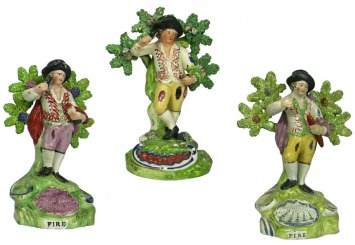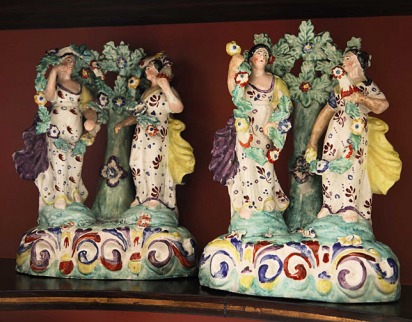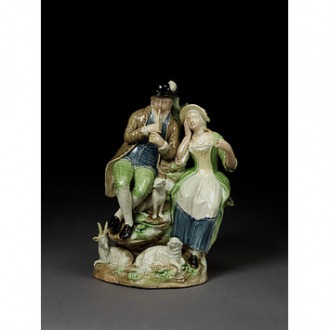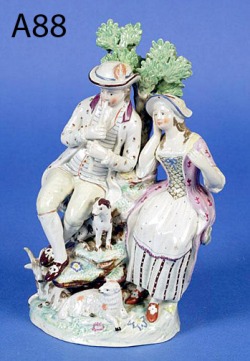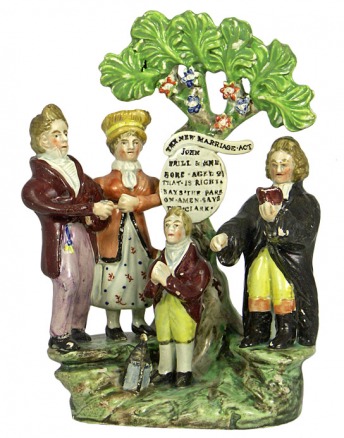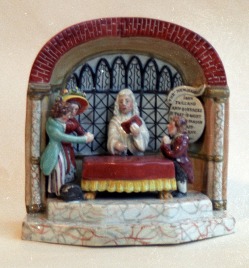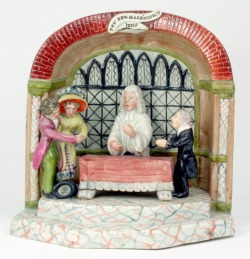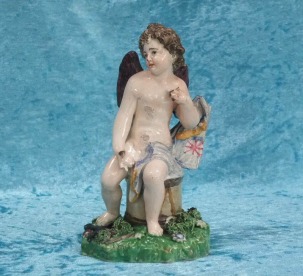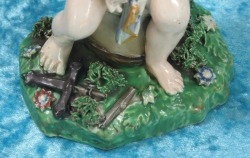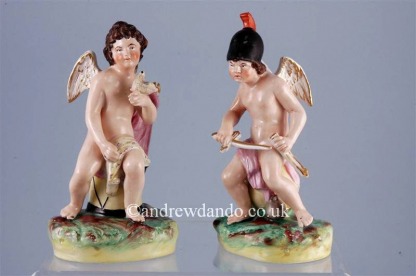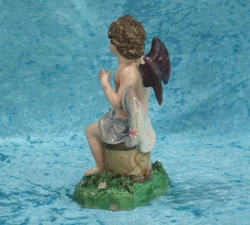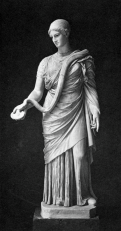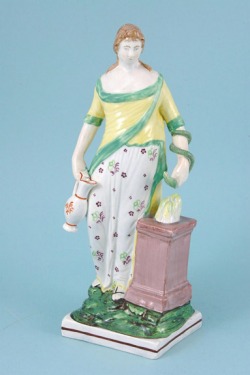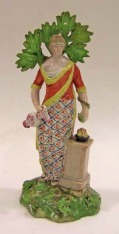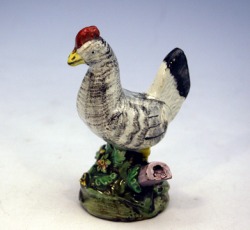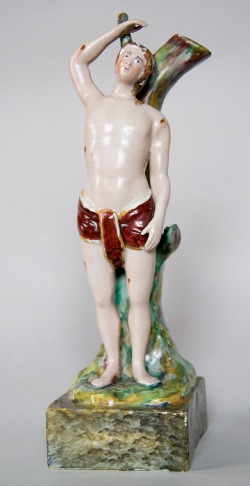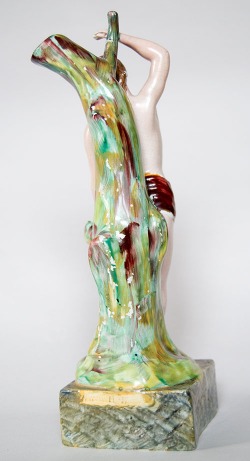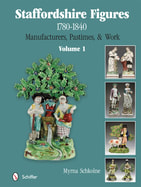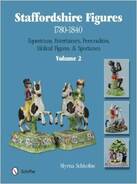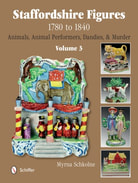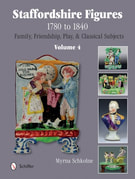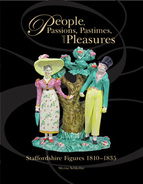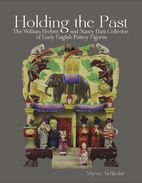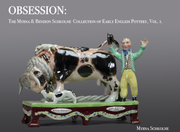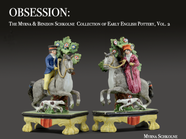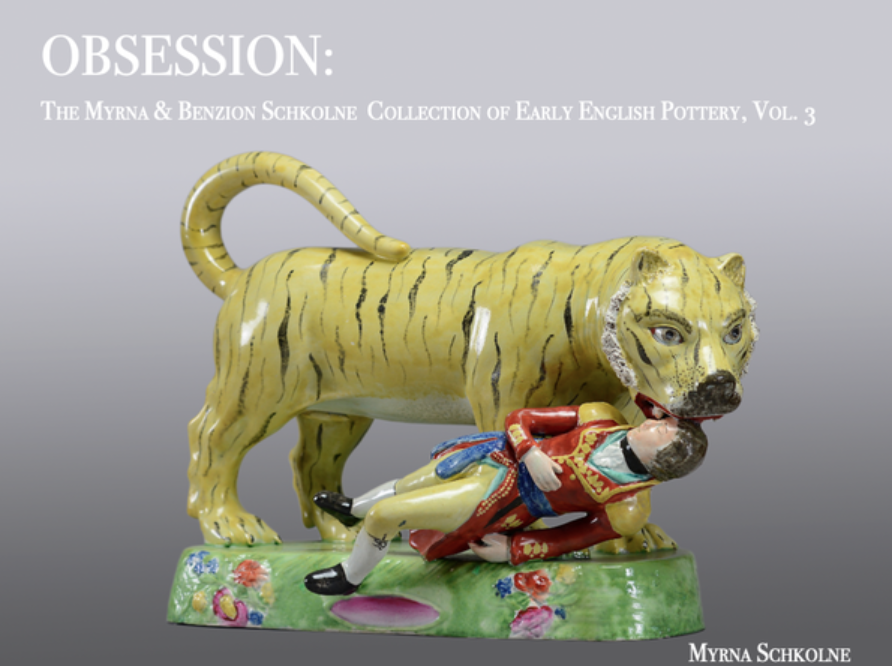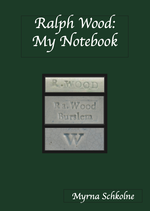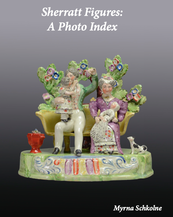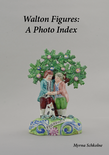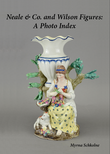For decades, writers and dealers have routinely described Staffordshire figures with bocages as "Walton" or "Walton-style". In short, if it is sweetly pretty and has a bocage, John Walton was credited with it. About two years ago, a leading ceramics dealer advertised a bocage figure as "Walton"...and it pushed a button for me. Not a single figure of that form is recorded marked "Walton", so there was absolutely no basis for attributing that particular figure to Walton.
My frustration pushed me to document ALL the marked Walton figure forms I could find. Just when I thought I had them all, I unearthed a fabulous figure in the reserve collection at Brighton Museum. What a find! My total now stands at 84 figure forms. I have recorded these here. The point is this: if you see an unmarked figure that bears no resemblance to any of the known Walton figure forms, please don't call it Walton. Show me a Walton look-alike, and we can debate whether it is Walton or not. But if your figure doesn't even look like anything Walton ever made, just call it a Staffordshire figure, maker unknown.
To learn all about Walton figures, follow the MANUFACTURERS menu at the top of this page.
